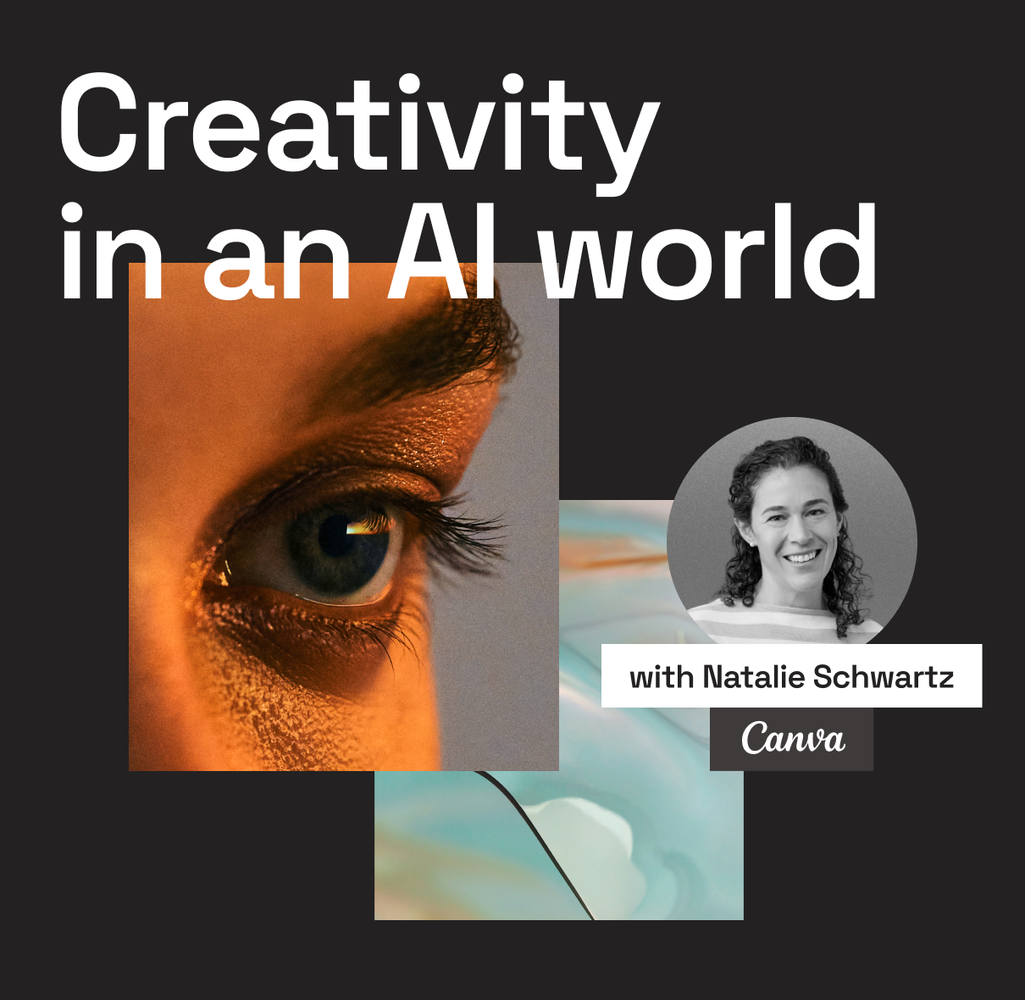
Creativity in an AI World: Natalie Schwartz (Canva)
Read insights from creative experts across a spectrum of disciplines, and discover how they're using generative AI as a supplement, not a substitute, for creativity.
Natalie Schwartz leads the Brand Marketing and Strategic Partnerships team at Canva. Coming from the accessible design suite, which has its own generative AI tool, gives Natalie an interesting perspective on the topic: As well as having insights into the current AI trends, she’s able to go into more detail about how AI tools can streamline work and create possibilities.

Toby: What do you find exciting about generative AI?
Natalie: In the last year alone, the things we assumed might always be impossible turned out to be possible and accessible right now. I’m excited about the rapid progress of the quality of AI technology and how it’s becoming easier to integrate it seamlessly into work.
It’s hard for anyone to forget their first “conversation” with ChatGPT and the disbelief at the kind of results you can get in a matter of seconds. I’m especially excited about how AI can kickstart creative tasks, like writing poems and creating images from scratch – showing us newly imagined concepts that spark further creativity.
As a marketer, I’m also eager to use AI for automating repetitive tasks and to fuel team collaboration. For example, summarizing the meaning of data in spreadsheets or pulling action items from long documents have already become super valuable use cases for AI.
Toby: Which creative roles do you think could be most easily replaced by, or augmented by, AI?
Natalie: While the landscape of work is certainly going to change, we see AI as an enhancer of human creativity. Most importantly, AI will help free up some of creatives’ time to do the work that matters. Any tasks that are automated by AI will free up brain space for deep thinking, digesting other creative work that’s out in the world, and developing ideas, which is why we get into creative work in the first place.
The aspects of creative work that are easily replaced by AI are usually the more tedious, repetitive, and time-consuming tasks, like resizing assets or making pixel-level tweaks to images and videos. Late last year, we released a survey of more than 4,000 global marketing and creative leaders, and 81% of them agree that AI-powered tools reduce the minutiae of repetitive tasks, freeing them up to focus on the more meaningful parts of their role.
With more time available for deep thought and collaboration, the overall baseline for the quality of creative work will be elevated.
Toby: What do you think are some of the challenges that generative AI poses for brands/companies?
Natalie: One challenge right now is that AI outputs are not necessarily tailored to your brand’s unique needs or visual identity. This is something Canva has focused on with Magic Write, by adding the ability for users to rewrite any copy in their personal voice or their brand’s tone of voice. The ability to generate assets in your brand’s style would unlock even more possibilities.
Providing a safe and relevant AI experience continues to be a complex challenge. Brands are looking for assurances that the materials they’re creating with AI are okay to use externally. Establishing more clarity on this at the policy level and across industries will allow more brands to confidently embrace AI.
Toby: What AI tools do you currently use frequently/are interested in using in the future?
Natalie: Naturally, we use the tools in Canva’s Magic Studio every day. Canva’s AI tools are integrated into our visual suite, so I don’t even have to go elsewhere to leverage AI. I’ll use Magic Write for the first draft of a brief or to brainstorm ideas. AI is a helpful sparring partner when working with teammates in other time zones who might not be online yet, as is the case with much of our team in Australia. Then, I’ll use Magic Switch to convert presentations and plans into action items. AI photo editing tools have also been a game changer for me, both personally and professionally.
Toby: So, is it easier or harder to be creative now compared with 5 years ago, with generative AI creating a sort of simulated creativity so easily?
Natalie: Overall, it’s easier than ever to go from an idea in your head to having something down on paper or rendered in an image. I believe this is a net positive for creativity. While there might be an overwhelming amount of content generated, it also means that fewer good ideas will die on the vine.
AI is acting as a catalyst to the creative process, but ultimately humans still have the responsibility and opportunity to take the seeds that AI provides and create something truly great.
The definition of what counts as creativity will expand, too. For example, unique prompting or training bespoke AI models might become important creative skills.